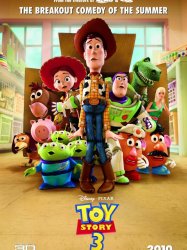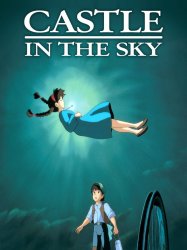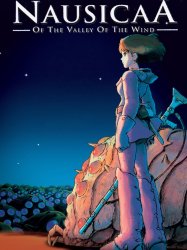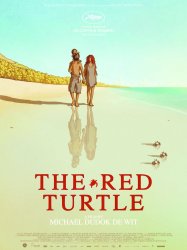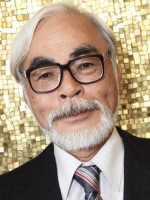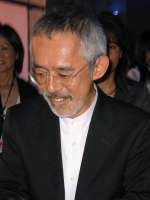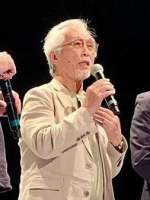Isao Takahata is a Actor, Director, Scriptwriter, Other, Assistant Director, Concept Artist and Thanks Japonais born on 29 october 1935 at Ise (Japon)
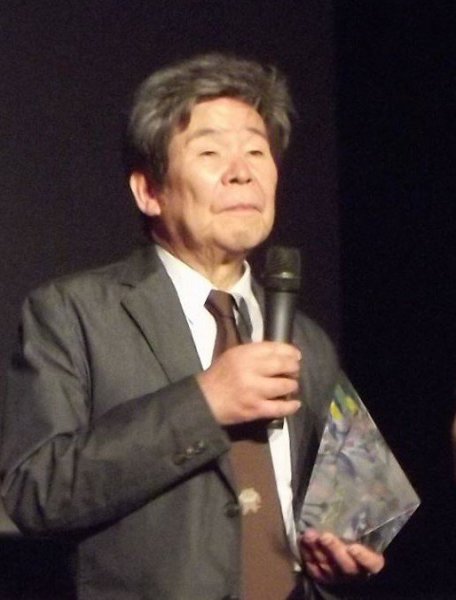
Isao Takahata (高畑 勲, Takahata Isao, born October 29, 1935) is a Japanese film director, animator, screenwriter and producer that has earned critical international acclaim for his work as a director of anime films. Takahata is the co-founder of Studio Ghibli along with long-time collaborative partner Hayao Miyazaki. He has directed films such as the war-themed Grave of the Fireflies, the romantic-drama Only Yesterday, the ecological-adventure Pom Poko and the comedy My Neighbors the Yamadas. Of these Grave of the Fireflies is considered by film critic Roger Ebert as one of the greatest war films ever made. Unlike most anime directors, Takahata doesn't draw and never worked as an animator before becoming a full fledged director.
According to Hayao Miyazaki, "Music and study are his hobbies". He was born in the same town as fellow director Kon Ichikawa, while Japanese film giant Yasujiro Ozu was raised by his father in nearby Matsusaka.
Takahata graduated from the University of Tokyo French literature course in 1959.
Il étudie la littérature française à l'université de Tōkyō. Il découvre ainsi les poèmes de Jacques Prévert, mais aussi son travail avec Paul Grimault, pour La Bergère et le Ramoneur première version du Roi et l'Oiseau, sortie au Japon en 1956. Ce film est l'un des déclencheurs de sa vocation artistique.
Dès 1959, il rejoint le studio d'animation Tōei Animation en tant qu’assistant, où il effectue toutes sortes les travaux, y compris le balayage. Il y fait connaissance de Hayao Miyazaki, avec qui il est engagé dans le mouvement syndical. En 1963, il réalise la série Ken, l’enfant loup.
En 1968, il réalise son premier long métrage, Horus, prince du soleil, en collaboration avec Hayao Miyazaki. Ce film, sorti dans une version inachevée et mutilée, n'ayant pas obtenu le succès attendu, les producteurs privilégient alors la création télévisuelle plutôt que cinématographique. À partir de ce projet, Miyazaki et Takahata travaillent souvent ensemble, sur des films (Heidi, la petite fille des Alpes en 1974, Nausicaä de la vallée du vent en 1984 et L'Histoire du canal de Yanagawa en 1987) comme sur des séries télévisées (notamment la première série de Lupin III, plus connue en France sous le nom d'Edgar de la Cambriole).
Pour Takahata et Miyazaki, la « trilogie » Heidi, Marco (d'après Le Livre-Cœur) et Akage no An (ou Anne, la maison aux pignons verts), tous trois réalisés entre 1974 et 1979, constitue un âge d'or, même si leur collaboration s'est terminée avec le dernier épisode. Leur amitié persiste néanmoins, et la collaboration prend alors une nouvelle orientation : Miyazaki dirige et Takahata réalise. Cependant, au cours de la réalisation de Anne, la Maison aux pignons verts, Miyazaki démissionne.
Takahata aide alors Miyazaki à produire Conan, le fils du futur.
En 1981, Takahata achève son second long-métrage Kié la petite peste, qui reçoit un bon accueil puis Goshu le Violoncelliste récompensé par le Prix Ofuji.
C'est en 1985 que Takahata fonde avec Miyazaki le Studio Ghibli. Il réalise pour ce studio, en 1988, Le Tombeau des lucioles puis Souvenirs goutte à goutte (1991), Pompoko (1994) qui reçoit le prix du long-métrage au festival d'Annecy, Mes voisins les Yamada (1999). Enfin Le Conte de la princesse Kaguya (2013) est présenté au Festival de Cannes (Quinzaine des réalisateurs) et nominé aux Oscars.
Contrairement à Miyazaki, Takahata n'est pas dessinateur d'animation. Il se considère avant tout comme un réalisateur. Il réalise d'ailleurs un documentaire en prise de vue réelle, L'Histoire du canal de Yanagawa, en 1987. Ce statut lui permet de n'être attaché à aucun style de dessin en particulier et de pousser au plus loin toute forme d'expérimentation dans le domaine de l'animation. Ainsi, le long métrage Mes voisins les Yamada est entièrement créé sur ordinateur afin d'obtenir un effet d'aquarelle difficile à traduire sur celluloïd
Le style des sujets traités par Takahata est très varié. Ainsi, Le Tombeau des lucioles est un drame de guerre plutôt réaliste, Pompoko tend vers le burlesque en présentant des tanuki qui tentent d'empêcher des humains de s'installer sur leurs terres. Le plus souvent, Isao Takahata s'inspire d'une œuvre existante (le roman d'Akiyuki Nosaka pour Le Tombeau des lucioles et celui de Kenji Miyazawa pour Goshu le violoncelliste) ou encore de l'univers des mangas (Souvenirs goutte à goutte ou Mes voisins les Yamada). Il peut également développer une idée originale, comme pour Pompoko (la guerre des tanuki).
Il reste très attaché au dessin à la main, malgré l’ère du numérique. Celui-ci laisse selon lui l’imagination du spectateur plus libre.
Son œuvre, marquée par le pacifisme, le conduit à s'opposer au projet d'amendement de l'article 9 de la Constitution japonaise, qui dispose que « le peuple japonais renonce à jamais à la guerre ». Membre du groupe Eigajin Kyujo no kai (« Les cinéastes pour l'article 9 »), il s'élève en 2015 contre les lois jugées sécuritaires et bellicistes du Premier ministre Shinzo Abe.
Isao Takahata meurt au matin du 5 avril 2018 à l'hôpital annexe de la Teikyo University Medical School, des suites d’un cancer du poumon.
Source : Wikidata
Isao Takahata

- Infos
- Photos
- Best films
- Family
- Characters
- Awards
Nationality Japon
Birth 29 october 1935 at Ise (Japon)
Death 5 april 2018 (at 82 years)
Creator of Studio Ghibli
Birth 29 october 1935 at Ise (Japon)
Death 5 april 2018 (at 82 years)
Creator of Studio Ghibli
According to Hayao Miyazaki, "Music and study are his hobbies". He was born in the same town as fellow director Kon Ichikawa, while Japanese film giant Yasujiro Ozu was raised by his father in nearby Matsusaka.
Takahata graduated from the University of Tokyo French literature course in 1959.
Biography
Né à Ise (Japon) le 29 octobre 1935, Isao Takahata reste marqué par le bombardement de la région d'Okayama par les Américains pendant la Seconde Guerre mondiale, fuyant pieds nus en pyjama avec l'une de ses sœurs.Il étudie la littérature française à l'université de Tōkyō. Il découvre ainsi les poèmes de Jacques Prévert, mais aussi son travail avec Paul Grimault, pour La Bergère et le Ramoneur première version du Roi et l'Oiseau, sortie au Japon en 1956. Ce film est l'un des déclencheurs de sa vocation artistique.
Dès 1959, il rejoint le studio d'animation Tōei Animation en tant qu’assistant, où il effectue toutes sortes les travaux, y compris le balayage. Il y fait connaissance de Hayao Miyazaki, avec qui il est engagé dans le mouvement syndical. En 1963, il réalise la série Ken, l’enfant loup.
En 1968, il réalise son premier long métrage, Horus, prince du soleil, en collaboration avec Hayao Miyazaki. Ce film, sorti dans une version inachevée et mutilée, n'ayant pas obtenu le succès attendu, les producteurs privilégient alors la création télévisuelle plutôt que cinématographique. À partir de ce projet, Miyazaki et Takahata travaillent souvent ensemble, sur des films (Heidi, la petite fille des Alpes en 1974, Nausicaä de la vallée du vent en 1984 et L'Histoire du canal de Yanagawa en 1987) comme sur des séries télévisées (notamment la première série de Lupin III, plus connue en France sous le nom d'Edgar de la Cambriole).
Pour Takahata et Miyazaki, la « trilogie » Heidi, Marco (d'après Le Livre-Cœur) et Akage no An (ou Anne, la maison aux pignons verts), tous trois réalisés entre 1974 et 1979, constitue un âge d'or, même si leur collaboration s'est terminée avec le dernier épisode. Leur amitié persiste néanmoins, et la collaboration prend alors une nouvelle orientation : Miyazaki dirige et Takahata réalise. Cependant, au cours de la réalisation de Anne, la Maison aux pignons verts, Miyazaki démissionne.
Takahata aide alors Miyazaki à produire Conan, le fils du futur.
En 1981, Takahata achève son second long-métrage Kié la petite peste, qui reçoit un bon accueil puis Goshu le Violoncelliste récompensé par le Prix Ofuji.
C'est en 1985 que Takahata fonde avec Miyazaki le Studio Ghibli. Il réalise pour ce studio, en 1988, Le Tombeau des lucioles puis Souvenirs goutte à goutte (1991), Pompoko (1994) qui reçoit le prix du long-métrage au festival d'Annecy, Mes voisins les Yamada (1999). Enfin Le Conte de la princesse Kaguya (2013) est présenté au Festival de Cannes (Quinzaine des réalisateurs) et nominé aux Oscars.
Contrairement à Miyazaki, Takahata n'est pas dessinateur d'animation. Il se considère avant tout comme un réalisateur. Il réalise d'ailleurs un documentaire en prise de vue réelle, L'Histoire du canal de Yanagawa, en 1987. Ce statut lui permet de n'être attaché à aucun style de dessin en particulier et de pousser au plus loin toute forme d'expérimentation dans le domaine de l'animation. Ainsi, le long métrage Mes voisins les Yamada est entièrement créé sur ordinateur afin d'obtenir un effet d'aquarelle difficile à traduire sur celluloïd
Le style des sujets traités par Takahata est très varié. Ainsi, Le Tombeau des lucioles est un drame de guerre plutôt réaliste, Pompoko tend vers le burlesque en présentant des tanuki qui tentent d'empêcher des humains de s'installer sur leurs terres. Le plus souvent, Isao Takahata s'inspire d'une œuvre existante (le roman d'Akiyuki Nosaka pour Le Tombeau des lucioles et celui de Kenji Miyazawa pour Goshu le violoncelliste) ou encore de l'univers des mangas (Souvenirs goutte à goutte ou Mes voisins les Yamada). Il peut également développer une idée originale, comme pour Pompoko (la guerre des tanuki).
Il reste très attaché au dessin à la main, malgré l’ère du numérique. Celui-ci laisse selon lui l’imagination du spectateur plus libre.
Son œuvre, marquée par le pacifisme, le conduit à s'opposer au projet d'amendement de l'article 9 de la Constitution japonaise, qui dispose que « le peuple japonais renonce à jamais à la guerre ». Membre du groupe Eigajin Kyujo no kai (« Les cinéastes pour l'article 9 »), il s'élève en 2015 contre les lois jugées sécuritaires et bellicistes du Premier ministre Shinzo Abe.
Isao Takahata meurt au matin du 5 avril 2018 à l'hôpital annexe de la Teikyo University Medical School, des suites d’un cancer du poumon.
Best films
Usually with
Filmography of Isao Takahata (17 films)
Actor
 , 1h58
, 1h58Genres Documentary, Animation
Actors Hayao Miyazaki, Toshio Suzuki, John Lasseter, Isao Takahata, Hideaki Anno, Joe Hisaishi
Roles Self
Rating76%





The documentary delves into the life of Hayao Miyazaki and the productions of the animated films The Wind Rises and The Tale of the Princess Kaguya, including various footage of said productions. The footage shown includes the choosing of Hideaki Anno as the voice actor for the character Jiro Horikoshi in The Wind Rises as well as the extensive and detailed amount of storyboarding sketched, inked, and painted by Miyazaki. It notes Miyazaki's opinions on subjects such as the Fukushima Daiichi nuclear disaster and Zero planes, and shows his tensions with some of the other staff, including Isao Takahata, and his memories of his father. The film illustrates the importance of Miyazaki, Takahata, and Toshio Suzuki's works altogether to help Studio Ghibli be successful, and concludes with mention of Miyazaki's supposed official retirement.
Director
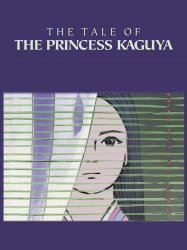 , 2h17
, 2h17Directed by Isao Takahata
Origin Japon
Genres Drama, Fantastic, Fantasy, Historical, Animation
Themes Space adventure films, Feminist films, Seafaring films, Transport films, Sur la Lune, Political films, Alternate history films, Space opera, Children's films
Actors Kengo Kora, Takeo Chii, Nobuko Miyamoto, Atsuko Takahata, Tomoko Tabata, Darren Criss
Rating80%





A bamboo cutter named Sanuki no Miyatsuko discovers a miniature girl inside a glowing bamboo shoot. Believing her to be a divine presence, Miyatsuko and his wife decide to raise her as their own, calling her "Princess". The girl grows rapidly and conspicuously, marveling her parents and earning her the nickname "Takenoko" (Little Bamboo) from the other children in the village. Sutemaru, the oldest among Kaguya's friends, develops a particularly close relationship with her.
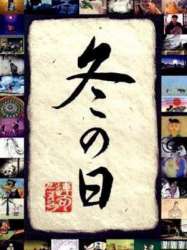
Winter Days (2003)
, 40minutesDirected by Raoul Servais, Isao Takahata, Iouri Norstein, Kihachirō Kawamoto, Kōji Yamamura, Mark Baker (animateur), Yōji Kuri, Co Hoedeman, Yōichi Kotabe, Jacques Drouin
Origin Japon
Genres Animation
Themes Poésie, Adaptation d'un poème
Actors Kyōko Kishida
Rating65%





Le film consiste en une série de 36 courts métrages d'une durée comprise entre 30 secondes et 2 minutes environ, chacun inspiré par l'une des strophes du poème. Entre les films, la strophe du film à venir s'affiche à l'écran et est lue par un narrateur ou une narratrice. Comme il est d'usage dans ce type de poème, le premier vers de chaque nouvelle strophe reprend le dernier vers de la strophe précédente. Le premier court métrage montre un groupe de poètes japonais réunis dans une maison et accueillant l'invité d'honneur qui, selon l'usage, compose la première strophe du renku ; c'est le seul à montrer les auteurs du poème. Les films suivants plongent dans l'univers d'images et de sensation évoqués par les strophes du poème. Le poème lui-même ne développe pas d'intrigue suivie ; il contient des éléments d'intrigue, mais ils restent très allusifs. Les courts métrages, de leur côté, ne présentent pas nécessairement une adaptation littérale du poème mais s'en inspirent plus ou moins librement. Les différents courts métrages ne comportent pas de paroles, seulement de la musique et des bruitages. Les techniques d'animation sont extrêmement variées, de même que les styles graphiques et le ton des différents films (ils sont tour à tour paisibles, angoissants, drôles, tristes, etc.). Le film proprement dit est suivi d'un documentaire de making of donnant des informations sur le poème d'origine et sur la production du film.
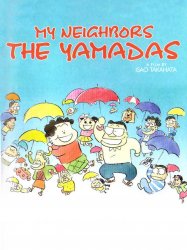
My Neighbors the Yamadas (1999)
, 1h44Directed by Isao Takahata
Genres Animation
Themes Feminist films, Political films, Children's films
Actors James Belushi, Molly Shannon, Yasuko Tomita, Daryl Sabara, Tamao Nakamura, Yukiji Asaoka
Rating70%





The film is a series of vignettes following the daily lives of the Yamada family: Takashi and Matsuko (the father and mother), Shige (Matsuko's mother), Noboru (aged approximately 13, the son), Nonoko (aged approximately 5, the daughter), and Pochi (the family dog).
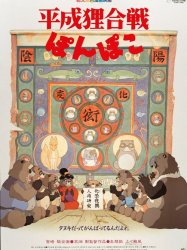
Pom Poko (1994)
, 1h59Directed by Isao Takahata
Genres Fantasy, Adventure, Animation
Themes Films about animals, Environmental films, Feminist films, Films based on mythology, Film d'animation mettant en scène un animal, Mythologie japonaise, Political films, Children's films, Ecologie
Actors Yuriko Ishida, Patrick Floersheim, Guillaume Orsat, Andre Stojka, Shigeru Izumiya, Henri Labussière
Rating72%





The story begins in late 1960s Japan. A group of tanuki are threatened by a gigantic suburban development project called New Tama, in the Tama Hills on the outskirts of Tokyo. The development is cutting into their forest habitat and dividing their land. The story resumes in early 1990s Japan, during the early years of the Heisei era. With limited living space and food decreasing every year, the tanuki begin fighting among themselves for the diminishing resources, but at the urging of the matriarch Oroku ("Old Fireball"), they decide to unify to stop the development.
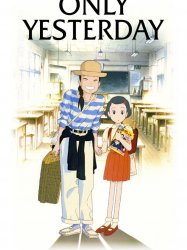
Only Yesterday (1991)
, 1h58Directed by Isao Takahata
Genres Drama, Action, Animation, Romance
Themes Feminist films, Political films, Children's films
Actors Miki Imai, Toshirō Yanagiba, Yōko Honna, Mayumi Iizuka, Ichirō Nagai, Daisy Ridley
Rating75%





In 1982, Taeko is 27 years old, unmarried, has lived her whole life in Tokyo and now works at a company there. She decides to take another trip to visit the family of the elder brother of her brother-in-law in the rural countryside to help with the safflower harvest and get away from city life. While traveling at night on a sleeper train to Yamagata, she begins to recall memories of herself as a schoolgirl in 1966, and her intense desire to go on holiday like her classmates, all of whom have family outside of the big city.

Grave of the Fireflies (1988)
, 1h30Directed by Isao Takahata
Origin Japon
Genres Drama, War, Animation
Themes Films about children, Films about families, Feminist films, Seafaring films, Transport films, L'enfance marginalisée, Political films, Children's films
Actors Veronica Taylor
Rating84%





The film begins at Sannomiya Station on 21 September 1945, shortly after the end of World War II. A boy, Seita (清太), is shown dying of starvation. Later that night, having removed Seita's body, a janitor digs through his possessions and finds a candy tin which he throws away into a nearby field. The spirit of Seita's younger sister, Setsuko (節子), springs from the tin and is joined by Seita's spirit as well as a cloud of fireflies. Seita's spirit then begins to narrate their story accompanied by an extended flashback of the final months of World War II.
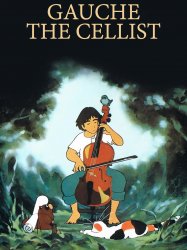
Gauche the Cellist (1982)
Directed by Isao Takahata
Genres Fantasy, Musical, Animation
Themes Feminist films, Films about music and musicians, Films about classical music and musicians, Political films
Actors Fuyumi Shiraishi, Keiko Yokozawa, Christophe Lemoine, Kaneta Kimotsuki, Masashi Amenomori, Éric Legrand
Rating69%





Goshu est un violoncelliste d'orchestre maladroit et timide, toujours réprimandé par son professeur. Il va être aidé dans la préparation de son concert par la visite d'une succession d'animaux : un chat, un coucou, un tanuki et un mulot, chacun lui apportant des vertus telles que la patience, le goût de la communication et la rigueur. Le chat, provocateur, insolent et chapardeur, révèle à Goshu sa faculté d'exprimer sa colère. L'oiseau chantant son fameux « coucou » sur deux notes est un modèle pour Goshu qui tentera de multiples variations sur cet air ; le tanuki approfondit l'enseignement du rythme avec son tambour. Enfin, la souris suppliera Goshu de jouer pour la guérison de son souriceau malade, ce qui sera l'occasion pour Goshu de faire montre de sa compassion et de sa générosité. Ces animaux, dans leur comportement authentique, auront tous contribué, par l'échange, à l'apprentissage intime du jeune héros.
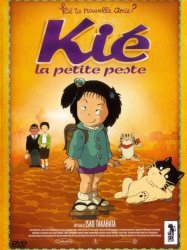
Chie the Brat (1981)
, 1h45Directed by Isao Takahata
Genres Drama, Comedy, Animation
Themes Films about children, Feminist films, Political films
Actors Shinsuke Shimada, Ichirō Nagai
Rating70%





Kié est une petite fille dont le père tient un petit restaurant dans l'arrondissement Nishinari-ku d'Osaka. Bagarreur et joueur, ce dernier néglige sa famille et son travail et sa femme le quitte, tout en continuant à rencontrer sa fille en cachette. Cette dernière, à huit ans seulement, s'occupe du restaurant tout en essayant de travailler en classe.
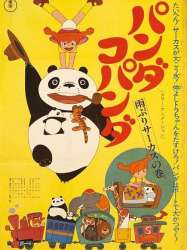
Directed by Isao Takahata
Genres Comedy, Animation
Themes Films about animals, Mise en scène d'un mammifère, Panda
Actors Kazuo Kumakura, Yasuo Yamada, Camille Donda, Philippe Catoire, Dorothée Pousséo, Gérard Surugue
Rating66%





Un bébé tigre échappé d'un cirque de passage s'introduit dans la maison de Mimiko en son absence et s'installe chez eux. Mais les propriétaires du cirque sont à sa recherche, et sa mère y est par ailleurs toujours enfermée.
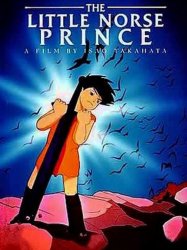
Horus: Prince of the Sun (1968)
, 1h22Directed by Isao Takahata
Genres Drama, Fantasy, Adventure, Animation
Themes Feminist films, Political films
Actors Mikijirō Hira, Etsuko Ichihara, Yoshiko Asai, Tadashi Yokouchi, Corinne Orr, Eijirō Tōno
Rating65%





Set in an unspecified northern kingdom, the film opens with the young Horus (aka Hols) (Hisako Ōkata (Japanese)/Billie Lou Watt (English)) attempting to fight off a pack of "silver wolves," and accidentally waking up an ancient stone giant, named Mogue (or Rockoar in some editions of the film). Horus succeeds in pulling a splinter from the giant's shoulder, which transpires to be a rusty and ancient sword. The giant proclaims this to be the "Sword of the Sun," promising also that when the sword has been reforged, he will come to Horus, who will then be called "Prince of the Sun".
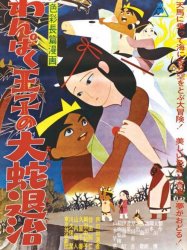 , 1h25
, 1h25Directed by Isao Takahata
Genres Fantasy, Adventure, Animation
Themes Films about animals, Films based on mythology, Films about dragons, Mythologie japonaise, Children's films
Actors Morio Kazama, Masato Yamanouchi, Kiyoshi Kawakubo
Rating70%





This anime film tells the story of the god Susano'o (as a cute boy), whose mother Izanami has died. He is deeply hurt by the loss of his mother but his father Izanagi tells him that his mother is now in heaven. Despite Izanagi's warnings, Susano'o eventually sets off to find her. Along with his companions, Akahana (a little talking rabbit) and Titan Bō (a strong but friendly giant from the Land of Fire), Susano'o overcomes all obstacles in his long voyage. He eventually comes to the Izumo Province, where he meets Princess Kushinada, a little girl whom he becomes friends with (he also thinks that she is so beautiful that she looks like his mother). Kushinada's family tells Susano'o that their other seven daughters were sacrificed to the fearsome eight-headed serpent, the Yamata no Orochi. Susano'o is so infatuated with Kushinada that he decides to help her family protect her and slay the Orochi once and for all and he, Akahana and Bō prepare for the showdown.
Scriptwriter
 , 2h17
, 2h17Directed by Isao Takahata
Origin Japon
Genres Drama, Fantastic, Fantasy, Historical, Animation
Themes Space adventure films, Feminist films, Seafaring films, Transport films, Sur la Lune, Political films, Alternate history films, Space opera, Children's films
Actors Kengo Kora, Takeo Chii, Nobuko Miyamoto, Atsuko Takahata, Tomoko Tabata, Darren Criss
Roles Original Film Writer
Rating80%





A bamboo cutter named Sanuki no Miyatsuko discovers a miniature girl inside a glowing bamboo shoot. Believing her to be a divine presence, Miyatsuko and his wife decide to raise her as their own, calling her "Princess". The girl grows rapidly and conspicuously, marveling her parents and earning her the nickname "Takenoko" (Little Bamboo) from the other children in the village. Sutemaru, the oldest among Kaguya's friends, develops a particularly close relationship with her.

My Neighbors the Yamadas (1999)
, 1h44Directed by Isao Takahata
Genres Animation
Themes Feminist films, Political films, Children's films
Actors James Belushi, Molly Shannon, Yasuko Tomita, Daryl Sabara, Tamao Nakamura, Yukiji Asaoka
Roles Ecrivain
Rating70%





The film is a series of vignettes following the daily lives of the Yamada family: Takashi and Matsuko (the father and mother), Shige (Matsuko's mother), Noboru (aged approximately 13, the son), Nonoko (aged approximately 5, the daughter), and Pochi (the family dog).

Pom Poko (1994)
, 1h59Directed by Isao Takahata
Genres Fantasy, Adventure, Animation
Themes Films about animals, Environmental films, Feminist films, Films based on mythology, Film d'animation mettant en scène un animal, Mythologie japonaise, Political films, Children's films, Ecologie
Actors Yuriko Ishida, Patrick Floersheim, Guillaume Orsat, Andre Stojka, Shigeru Izumiya, Henri Labussière
Roles Original Story
Rating72%





The story begins in late 1960s Japan. A group of tanuki are threatened by a gigantic suburban development project called New Tama, in the Tama Hills on the outskirts of Tokyo. The development is cutting into their forest habitat and dividing their land. The story resumes in early 1990s Japan, during the early years of the Heisei era. With limited living space and food decreasing every year, the tanuki begin fighting among themselves for the diminishing resources, but at the urging of the matriarch Oroku ("Old Fireball"), they decide to unify to stop the development.
 Connection
Connection
